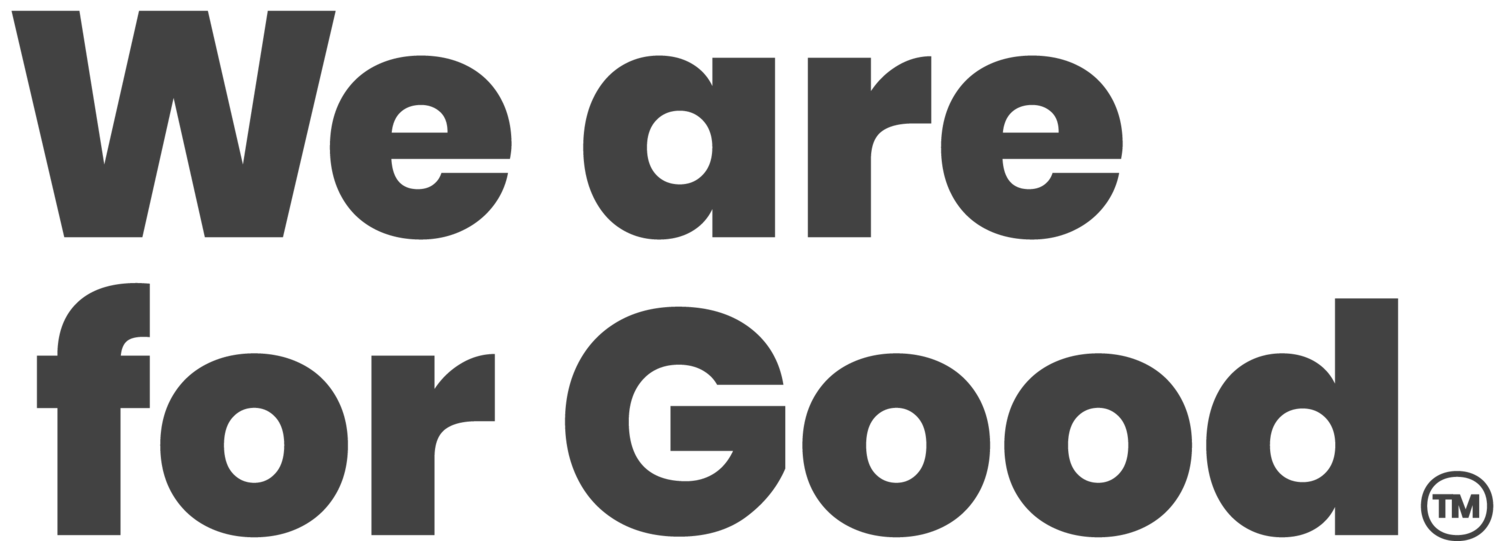The Art of Donor Stewardship: Strategies for Consistent Engagement
This blog was written by Classy’s Executive Nonprofit Industry Advisor, Michelle Boggs. Michelle draws on over 15 years of experience and a robust set of credentials to offer expert insights and leadership in the nonprofit sector, particularly in fundraising and development.
Nonprofits face a critical challenge: maintaining a steady stream of donor support over time. One key solution lies in effective donor stewardship—a strategic approach to nurturing relationships with supporters.
This involves expressing gratitude, maintaining regular communication, and engaging donors in meaningful ways.
Below, we cover a range of donor stewardship strategies designed to help nonprofits cultivate lasting connections. Implement these cost-effective strategies consistently throughout the year to ensure donors remain engaged and committed to your cause.
Before we start, it's crucial to note that while these strategies serve as a solid foundation, you should adapt them to suit your organization's unique needs, goals, and brand. Customizing your approach will strengthen your bonds with supporters and help drive long-term success.
4 Key Approaches to Donor Stewardship
Establishing and maintaining a consistent cadence of stewardship activities across these four categories is key to fostering sustainable relationships with supporters.
1. Acknowledgement
Beyond standard supporter interactions, intentional expressions of gratitude are essential. Thanking donors promptly for their contributions can profoundly influence your relationship with them, as can sharing words of appreciation unrelated to donations.
That’s why it’s crucial to establish a protocol for timely thank-you notes after someone contributes to your cause. For example, after a donation, you can:
Craft a welcome email series for first-time donors, including 1 to 4 emails introducing the donor to your work, upcoming goals, and other ways to remain involved.
Send handwritten notes to new and returning donors, expressing genuine appreciation for their contributions and sharing a specific example of how their support has made a difference.
Create a social media campaign dedicated to thanking loyal donors, featuring their stories and the impact of their donations, and encouraging others to join in supporting your cause.
Recognize major donors in your organization's annual report or newsletter, showcasing their generosity and the positive outcomes it has enabled.
Involve board members, benefactors, and volunteers in creative ways like recording videos, sending fun messages, or making calls after donations.
2. Recognition
In addition to the initial thank-you's, donor stewardship should provide opportunities for broader recognition. Publicly acknowledging their support not only demonstrates gratitude but also showcases their dedication to your cause, potentially motivating others to contribute.
You can also extend your organization’s recognition efforts to the agenda at your annual gala event or quarterly donor appreciation events. These gatherings are perfect opportunities to hand out awards, share stories about loyal donors’ contributions, and celebrate your community of supporters.
Consider thanking donors in event programs, on event signage, and with special touches like thank-you cards at their table or a designated area for existing donors to create a VIP event experience.
Another way to acknowledge donors' support is by sending them small gifts or incentives throughout the year. For example, you could send branded merchandise to new recurring donors or volunteers.
3. Reporting
To engage donors more effectively, nonprofits should move beyond viewing transactions as the sole source of truth. In the age of personalization, it's crucial to evolve donor expectations by understanding how numerous small data points and interactions shape identity.
Leveraging advanced analytics can provide deeper insights into donor behavior, helping organizations tailor their strategies. By integrating dimensional thinking into their approach, nonprofits can create more impactful and personalized experiences for donors, leading to stronger relationships and support.
Show donors the specific impact your nonprofit has had through periodic updates in your newsletter and an annual impact report. You can even spotlight key data periodically on your social media channels to remain accountable to donors.
Take advantage of the growing transition to personalized electronic annual reports, which has been incredibly successful and popular. Requesting one-on-one meetings with donors to discuss impact and reporting can significantly enhance relationship-building.
Additionally, for long-time donors, showcasing their lifetime value to your organization and acknowledging other forms of support, such as opening doors, making introductions, or bringing others along, is crucial.
When supporters see the impact of their investment in your cause, they're more likely to stay engaged.
4. Ongoing Engagement
In addition to recognizing donors for their contributions and involvement, providing supporters with avenues for continued engagement is a large piece of the stewardship puzzle.
Keeping the door open for exposure to your organization’s influence can help foster their charitable side and amplify their intrinsic calling to remain part of your team.
Plan quarterly activities for donors to join, such as:
Virtual meetups or webinars with guest speakers on topics related to your cause, allowing supporters to learn and engage from the comfort of their homes.
Community service projects that supporters can participate in, individually or as a group, to directly contribute to the cause.
Online forums or discussion groups where supporters can share ideas, ask questions, and connect with like-minded individuals.
Special recognition or perks for long-term supporters, such as VIP access to events, early access to new initiatives, or personalized thank-you notes from beneficiaries.
You can also send communications beyond fundraising, focusing instead on genuine care and a desire to connect with your donors. For example, you could send a holiday card, donor anniversary card, or donor survey.
Remember, the purpose of these types of outreach isn’t to ask for additional gifts but rather to keep your engagement with the donor fresh and personal.
Maximize Stewardship Impact with Defined Donor Cohorts
Tailoring donor stewardship actions based on supporters’ relationship with your nonprofit is critical.
For example, you may organize a thank-you luncheon for major donors and send a personalized thank-you video following a first-time donor’s gift to your crowdfunding campaign.
You can define donor cohorts based on giving frequency, donation amount, demographics, communication preferences, or other characteristics. But at a minimum, group your donor base into these four crucial categories:
New donors: These supporters are fundamental to your nonprofit's growth, so making them feel welcomed and appreciated is essential. Stewardship actions for this group should include personalized thank-you messages, updates on how their donation makes a difference, and invitations to engage further with your organization.
Recurring donors: These loyal donors are the backbone of your nonprofit's funding. To keep them engaged and motivated to continue their support, stewardship actions should focus on regular communication and personalized appreciation. This can include sending them updates on the impact of their donations, inviting them to exclusive events or behind-the-scenes tours, and recognizing their contributions publicly. By making them feel valued and showing them the impact of their support, you can encourage continued donations and potentially inspire them to increase their giving.
Mid-level donors: These supporters contribute substantially to your nonprofit, although they may not qualify as major donors. That’s why it's critical to implement stewardship actions that recognize the special role they play in supporting your work and begin conversations about potential opportunities for larger gifts in the future.
Major donors: These generous supporters have made significant donations to advance your cause. Providing them with high-touch stewardship is essential to demonstrate how much their gift means to your organization and how you use it to make a difference. This level of stewardship is crucial for maintaining their engagement and preparing them for future substantial funding requests. For more tips, dive into these major gift fundraising best practices.
Nurturing First-Time Donors from Peer-to-Peer Campaigns
You may also want to consider subcategories within these groups that may need more customized stewardship. For example, Classy’s The State of Modern Philanthropy report found that 80% of people who donate to a peer-to-peer campaign on Classy are brand new to the nonprofit.
These donors likely discovered your organization through a friend or family member rather than traditional marketing. Your initial conversations with these supporters must introduce them to your work and show why they should continue to engage with your cause beyond the peer-to-peer fundraiser.
Donor cultivation for first-time supporters from peer-to-peer fundraising campaigns may include:
Using language that reminds the donor their trusted peer is already a supporter
Sending a welcome series with easily digestible information to connect the donor to your cause
Providing exclusive swag to new donors that reflects your campaign
Creating an emotional connection between the donor’s first gift and your cause
Leveraging peer-to-peer campaign data from your donor database as part of your donor management approach
Strengthening Donor Ties through Community Development
That said, despite a supporter’s giving level, strengthening their connection to your community is critical. The closer and more connected they feel to others in your network who share similar values, the more likely they’ll stick around.
Nurture this tight-knit community by encouraging connections through online groups, events, and volunteer opportunities. For example, you could facilitate one-on-one meetups or coffee dates to enhance camaraderie and deepen relationships.
You can also consider implementing a pen pal or mentorship program for those with busy schedules. Pairing major donors with new supporters allows them to exchange ideas and goals at their pace, fostering a sense of belonging and investment in your organization's mission.
Effective Timelines for Donor Engagement
While many nonprofits have innovative ideas for cultivating donor relationships, these efforts often fall short without a well-thought-out communications strategy.
By aligning your stewardship actions with a clear timeline, you can enhance organization and ensure consistency in your approach. Mapping out a plan keeps the momentum going and ensures you stay on track with the efforts you want to achieve.
Explore our free stewardship planner for ideas on where to begin.
Strengthen Donor Relationships and Reduce Churn
Thoughtful solicitation communications strategically timed to align with donors' interests and giving capacity can effectively inspire continued and increased support for your organization's mission.
By highlighting the specific impact of their past donations and demonstrating how their ongoing support can make a difference, you can nurture a deeper sense of connection and purpose among donors.
Copy Editor: Ayanna Julien
Michelle Boggs, Executive Nonprofit Industry Advisor, Classy
Michelle Boggs
This blog was written by Classy’s Executive Nonprofit Industry Advisor, Michelle Boggs. Michelle draws on over 15 years of experience and a robust set of credentials to offer expert insights and leadership in the nonprofit sector, particularly in fundraising and development.
Michelle Boggs, Executive Nonprofit Industry Advisor, Classy


